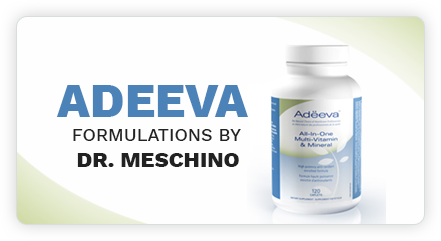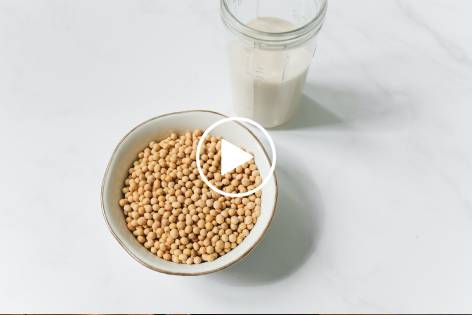
LMU 111 – Unveiling the Cardiovascular Benefits of Vitamin D: A Key to High Blood Pressure Prevention and Stroke Recovery
Source: International Journal of Nanomedicine (January 2018)
Lifestyle Medicine Update (November 3, 2018)
Introduction
In the pursuit of optimal health, understanding the intricate links between nutrition, physiology, and disease prevention is paramount. One such nexus lies in the relationship between vitamin D and cardiovascular well-being. A wealth of research has highlighted the intriguing connection between higher blood vitamin D levels and a reduced risk of high blood pressure (hypertension), enhanced heart function, and improved cardiorespiratory fitness. This article delves into the scientific studies that underscore the importance of vitamin D in guarding against high blood pressure and stroke, as well as elucidates the mechanisms through which this essential nutrient contributes to cardiovascular vitality.
The Foundations: Studies Supporting Vitamin D’s Cardiovascular Benefits
The cornerstone of this discourse rests on an illuminating study published in the International Journal of Nanomedicine in January 2018[^1^]. This research serves as a lighthouse guiding us through the intricate pathways by which vitamin D influences our cardiovascular health. But before delving into the specifics of this study, it is crucial to acknowledge the complementary insights provided by prior investigations. Notably, a 2017 study featured in the Journal of Clinical Diagnostic Research[^2^] corroborated the notion that lower vitamin D levels correlate with an increased risk of stroke. Moreover, administering vitamin D to stroke patients within the initial days post-stroke yielded remarkable outcomes—improved functional results at the three-month mark, coupled with reduced mortality and disabilities.
Vitamin D’s Role in Cardiovascular Fitness
Peering into the heart of the matter, the 2018 study[^1^] elucidated how vitamin D acts as a protector of cardiovascular health. Central to this defence mechanism is the action of vitamin D in enhancing the release of nitric oxide from the endothelial cells lining blood vessels. Nitric oxide is a vital molecule responsible for vasodilation—the widening of blood vessels—facilitating smoother blood flow and, consequently, reducing the resistance encountered by blood coursing through arteries. By lowering this resistance, vitamin D aids in maintaining diastolic blood pressure at optimal levels, thwarting its elevation.
Furthermore, the beneficial effects extend to the heart’s workload. When blood vessels dilate, the heart encounters less resistance while pumping blood through the circulatory system. This translates to a more efficient cardiovascular system and contributes to preventing an increase in systolic blood pressure. Intriguingly, this expanded arterial dilation augments the delivery of oxygen and nutrients to muscles during exercise, elucidating the superior cardiorespiratory fitness observed in individuals with higher blood vitamin D levels.
Empirical Evidences and Associations
Numerous empirical studies have illuminated the associations between blood vitamin D levels and cardiovascular health. Notably, analyses of extensive datasets such as the National Health and Nutrition Examination Surveys have unveiled that blood vitamin D levels exceeding 32.4 ng/ml (81 nmol/L) exhibit a robust correlation with a diminished risk of high blood pressure[^2^]. These findings have been fortified through meticulous control for confounding factors—age, sex, race, smoking, alcohol consumption, body mass index (BMI), physical activity, diabetes, cholesterol levels, C-reactive protein, kidney function, and more—solidifying the link between higher vitamin D levels and cardiovascular fortitude.
Unveiling the Mechanisms: Nitric Oxide and Beyond
The 2018 study[^1^] offers a pivotal insight into the mechanisms underlying vitamin D’s cardiovascular effects. It postulates that vitamin D plays a pivotal role in stimulating the release of nitric oxide from endothelial cells, thus fostering vasodilation. This cascading effect translates to an open expressway for blood, mitigating resistance and averting the rise of blood pressure. This proposition underscores the importance of evaluating one’s blood vitamin D levels, with a recommended target of 30 ng/ml or 80 nmol/L. However, a cautious approach is advised to prevent vitamin D toxicity, necessitating levels to remain below 100 ng/ml or 250 nmol/L.
Future Implications and Concluding Thoughts
As the body of research linking vitamin D to cardiovascular health continues to expand, the importance of sustaining optimal vitamin D levels gains prominence. The profound impact of this nutrient on blood pressure regulation, stroke recovery, and cardiorespiratory fitness heralds a new era in preventive medicine. Individuals are encouraged to collaborate with healthcare professionals to ensure their vitamin D status aligns with recommended thresholds, fostering a robust cardiovascular foundation. With its multifaceted benefits, vitamin D emerges as a potent ally in the quest for a heart-healthy life.
References:
- Khan A, Dawoud H, Malinski T. Nanomedical studies of the restoration of nitric oxide/peroxynitrite balance in the dysfunctional endothelium by 1,25-dihydroxy vitamin D3- clinical implications for cardiovascular disease. International Journal of Nanomedicine. 2018;13: 455-466. [Read the study here](https://www.dovepress.com/nanomedical-studies-of-the-restoration-of-nitric-oxideperoxynitrite-ba-peer-reviewed-article-IJN)
- [Vitamin D may help fight high blood pressure. Medical News Today.](https://www.medicalnewstoday.com/articles/320802.php)
- [Vitamin D and Stroke: Implications in Cardiovascular Risk. National Library of Medicine.](https://www.ncbi.nlm.nih.gov/pmc/articles/PMC5376887/)
- [Vitamin D and Higher Cardiorespiratory Fitness: Unveiling the Link. Sage Journals.](http://journals.sagepub.com/doi/10.1177/2047487318807279)
- 5. [The Link Between Prehypertension and Low Vitamin D Levels. Healio Endocrinology.](https://www.healio.com/endocrinology/news/online/%7B765aa8d6-1144-4dba-b1fc-3b92a1e186f4%7D/prehypertension-linked-to-low-vitamin-d?utm_source=TrendMD&utm_medium=cpc&utm_campaign=Healio__TrendMD_1)
Eat Smart, Live Well, Look Great,
Dr. Meschino

Dr. James Meschino
ABOUT THE AUTHOR
Dr. James Meschino, DC, MS, ROHP, is an educator, author, and researcher having lectured to thousands of healthcare professionals across North America. He holds a Master’s Degree in Science with specialties in human nutrition and biology and is recognized as an expert in the field of nutrition, anti-aging, fitness, and wellness as well as the author of numerous books.











